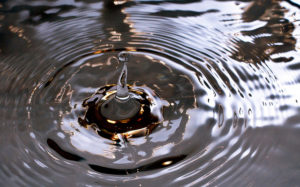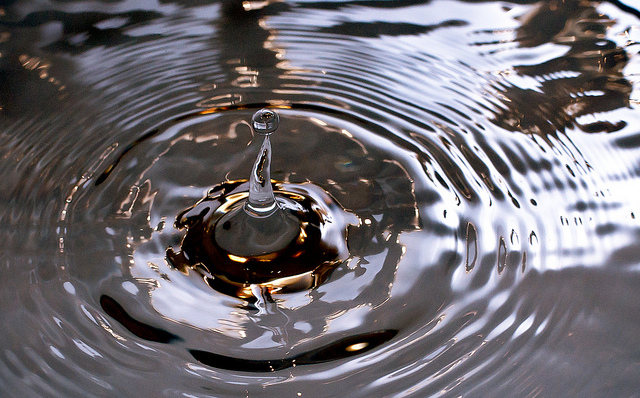 It’s been more than 6 months since we learned there were toxic chemicals in our drinking water in Wilmington, N.C. Six months since my family and I have been drinking bottled water to avoid GenX, a substance derived from a known cancer-causing chemical that was detected in post-filtration water produced and sold by the Cape Fear Public Utility Authority (CFPUA). I’d like to say that companies responsible for the GenX in our drinking water have done everything they possibly could to clean up the mess and fix the problem. But as I wrote back in July 2017, I didn’t trust those companies. So, what is the status?
It’s been more than 6 months since we learned there were toxic chemicals in our drinking water in Wilmington, N.C. Six months since my family and I have been drinking bottled water to avoid GenX, a substance derived from a known cancer-causing chemical that was detected in post-filtration water produced and sold by the Cape Fear Public Utility Authority (CFPUA). I’d like to say that companies responsible for the GenX in our drinking water have done everything they possibly could to clean up the mess and fix the problem. But as I wrote back in July 2017, I didn’t trust those companies. So, what is the status?
In late December 2016, the News & Observer wrote a fantastic article overviewing the ongoing issues and what to expect this year. I recommend everyone read it .
I’ll summarize the article in just a bit, but want to take a few paragraphs to refresh the readers’ memory of GenX and how the story, and its impact, first came to light. GenX is what’s known as perfluoro-2-propoxypropanoic acid. At the same time GenX was discovered in our drinking water, its close cousin—perfluorooctanoic acid, known as PFOA—was also found in the Cape Fear River, which is the source of our drinking water. All these chemicals are used to make things like non-stick cooking surfaces and waterproof materials. They are also considered toxic.
Extensive studies have shown PFOA causes cancer, and it’s known as an endocrine disruptor that can impact the thyroid, liver and other organs. GenX was created to replace the more dangerous PFOA. It has been researched less but at least one study indicates GenX causes very similar health problems. It is known as an emerging contaminant because the federal Environmental Protection Agency (EPA) has not fully studied its health effects nor acceptable exposure thresholds.
For years, GenX, PFOA and other chemicals allegedly have been dumped in the Cape Fear River by some chemical companies operating on an industrial compound 100 miles upriver in Fayetteville, N.C.—namely DuPont, Chemours and Kuraray America. The Port City Daily reported that in a 2016 study that sampled water in the Cape Fear, PFOA levels repeatedly exceeded EPA limits. The study also found the presence of GenX in post-filtration water produced and sold by the Cape Fear Public Utility Authority (CFPUA).
PFOA has been at the center of several actions and lawsuits against DuPont by the EPA, mainly because DuPont was deceptively and illicitly dumping the toxic chemical. In February 2017, a $670 million settlement was reached between DuPont, Chemours and residents of Ohio and West Virginia (for some eye-opening look at the West Virginia case, read this New York Times article ).
By the way, in 2008, as a result of DuPont’s actions and the government’s conclusion that PFOA was indeed harmful, DuPont and seven other U.S. companies agreed to virtually eliminate it from all consumer products by 2015. They also agreed to develop processes that would ensure that PFOA would not be released into the environment from finished products or manufacturing plants. Nonetheless, PFOA is in the Cape Fear River.
That 2008 agreement is why GenX was developed. PFOA is a persistent material, meaning it’s resistant to typical environmental degradation processes, and it’s been reported that PFOAs are in everything, including in the blood of 95 percent of Americans. GenX is supposed to breakdown much more easily so it is far less persistent, but its long-term health effects on humans are unknown. Studies submitted to the EPA by DuPont between 2006 and 2013 show it caused tumors and reproductive problems in lab animals, according to CBS News.
So, back to Wilmington and 2017. When the GenX and PFOA chemicals were discovered and reported on in May 2017, Chemours—a DuPont spinoff—announced would take steps to capture all wastewater containing the GenX chemical, remove the substance and dispose of it.
In mid-November, however, the state alleged that Chemours had dumped so much GenX into the Cape Fear River in one day in October—five months after Chemours’ announcement—that the river’s GenX levels spiked 100-fold! At the end of November, the state’s Department of Environmental Quality (DEQ) revoked Chemours’ permit to discharge wastewater into the Cape Fear River.
Since the GenX news first broke, the Environmental Work Group, a nonprofit that has studied these type of chemicals, has identified at least 11 North Carolina counties where the water has tested positive for GenX or other similar substances including Wake, Guilford, Cumberland, Orange, Harnett and New Hanover counties, according to the News & Observer article. Counties in South Carolina, Virginia and Georgia on or near the North Carolina border also had positive tests. Chemical relatives of GenX have also been found in Jordan Lake, a source of drinking water for much of the Triangle, News & Observer article said.
According to the News & Observer article, a 2016 study conducted by National Institutes of Health scientists based in North Carolina’s Research Triangle Park found that “data from some human studies suggests that PFCs may also have effects on human health, while other studies have failed to find conclusive links. The report adds that “additional research in animals and in humans is needed to better understand the potential adverse effects of PFCs for human health.”
The state’s environmental regulators at the DEQ appear to be ramping up their efforts to address GenX in our drinking water. The News & Observer article details actions the regulators took in late 2017, and discusses what legislators are considering. The newspaper reports that addressing water pollution is high on the list for lawmakers and that there’s bipartisan consensus in the General Assembly that more action is needed.
I still don’t know if the water that flows from my tap is safe. I don’t know if the water my two children have been drinking for at least a decade has irreparably harmed them. I don’t know if it has harmed me. I don’t know if it has harmed any of my friends and neighbors or any of our pets. I only know that clean water is non-negotiable. And still, as I said back in July 2017, my family and I won’t be drinking the water in Wilmington, N.C., for the foreseeable future.

There are no comments
Add yours